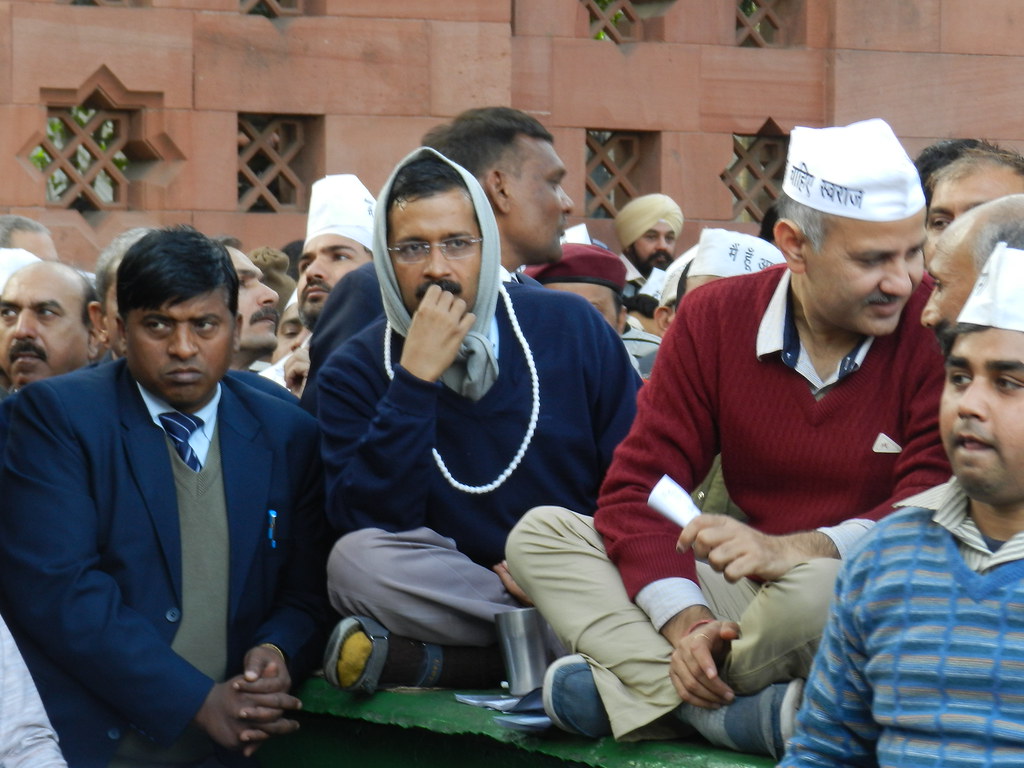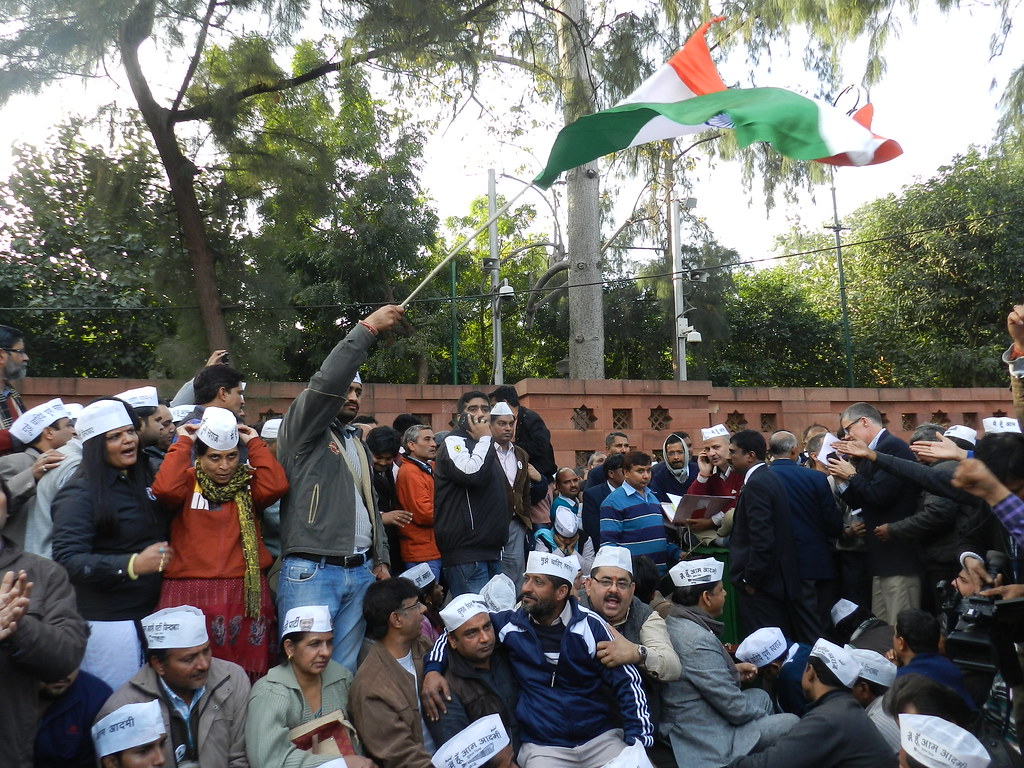By Parvez Alam,
Arvind Kejriwal led Delhi Government has really shown the way to the practitioners of politics and theoreticians that the arrangement made in Constitution of India between Union and State should be re-imagined because AAP is not for all the agreed structure of the establishment. The federal system or quasi- federal system of India is the arrangement for status quo of Indian political elite and bourgeoisie. The Rail Bhavan dharna of Kejriwal is one of the questioning attitudes against those arrangements.
It is unfortunate that the demand for the designation of police under Delhi state ambit came only after callous vigilantism of Law Minister Somnath Bharti. The media and civil society condemned the act of racist nature against the Ugandan and Nigerian women in Khirki Extension. The strategically staged plot of the drama was set up to demand the inclusion of Delhi Police into its state of affairs. The conspiracy theory is also around that Arvind Kejriwal wanted deviation of the media criticism against AAP on the issue of Danish woman gang rape in the heart of Delhi. The various political parties and civil society organizations demanded the resignation of Kejriwal on the line of resignation demanded from Sheila Dikshit aftermath of 16 December gang rape a year ago.

Interestingly, Kejriwal says that he is elected CM of Delhi and hence he is responsible to answer the people of Delhi. I was wondering what makes elected CMs of other Indian states and especially non- Congress chief ministers to sit on hunger strikes or dharna at Jantar Matar or Rail Bhavan in Delhi to demand their grievances to be fulfilled by the Central Government. They may sit on Dharna at Raj Bhavans in their respective Rajdhanis too. In other words, Kejriwal’s activist Chief Minister-ship should be emulated by Omar Abdullah who has only echoed the demands of civil society against AFSPA regime in Jammu and Kashmir in recent years. If Jaya Lalithaa has problems and she really wanted to solve the fishermen issue which is prerogative of Republic of India, she could have gone on dharna against UPA government. The populist leader like Mamata Bannerjee before becoming CM of West Bengal was known for sitting on dharna and marching in long rallies against UPA Government and also CPI (M) led State government.
If ‘anarchist’ CM is elected by the people and so was the previous CM, why he is assuming that every action of his has the silent support of people. He should not forget that more than half of the people of Delhi don’t like the AAP but still accept the Government. I am referring to the number of seats the AAP has in Delhi Assembly. If the drama of protest and dharna is for upcoming general election and to remain in media and recurrent news, then it shows the lack of vision and political courage. By being apologetic, Delhi CM can add more votes (people) on his side rather than being arrogant and erratic which might have unwanted side effects. We already have one of the AAP legislators calling his CM as ‘dictator’.
In one of the Op-Eds in The Hindu, Harbans Mukhia has analyzed the lack of vision of the AAP expressing the complex problems of the vast country. He asks “Aside from the manifold issues of foreign policy, relations with neighbours, problems of caste, religion, communalism etc., what is its vision for the future economic growth of the nation? On the face of it, the AAP leadership does not appear to have a cogent, comprehensive theory to guide its actions.” The AAP can drive middle class into its fold by addressing demands of everyday life in Delhi. The litmus test of this nascent party would be the general election of coming months.

I really appreciate those who are joining the AAP for some cause and some vision to change the discourse of politics. The politics of the last man, the subaltern should be the motive of the new entrants who are eagerly waiting to take responsibility to serve the nation and ‘the common man’. I am still confused though about the way this party, which is the product of civil society movement against corruption led by Anna Hazare, has transformed itself into the political society. What if every civil society organization floats their own political organization? Would they be able to garner the same kind of results as the AAP? Or, do we even need such kinds of result?
The populism of the AAP is also creating confusion in discussions, and many of the sympathizers and observers are tempted to take the sides of the AAP because it’s new option and seems like revolution. Revolution is change but not every change is revolution. AAP could be emulating some kind of mix of revolutionaries’ ideas of the past but the idealism which they bore in their mind should not be too secretive. It should not crash in the mind of the progenitor of the idea before the ultimate change takes place.
(Parvez Alam is a Research Scholar at Academy of International Studies, Jamia Millia Islamia.)
[Photos by Mudassir Rizwan, TwoCircles.net]
Related:

